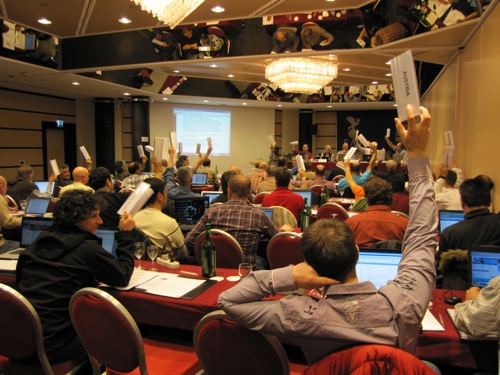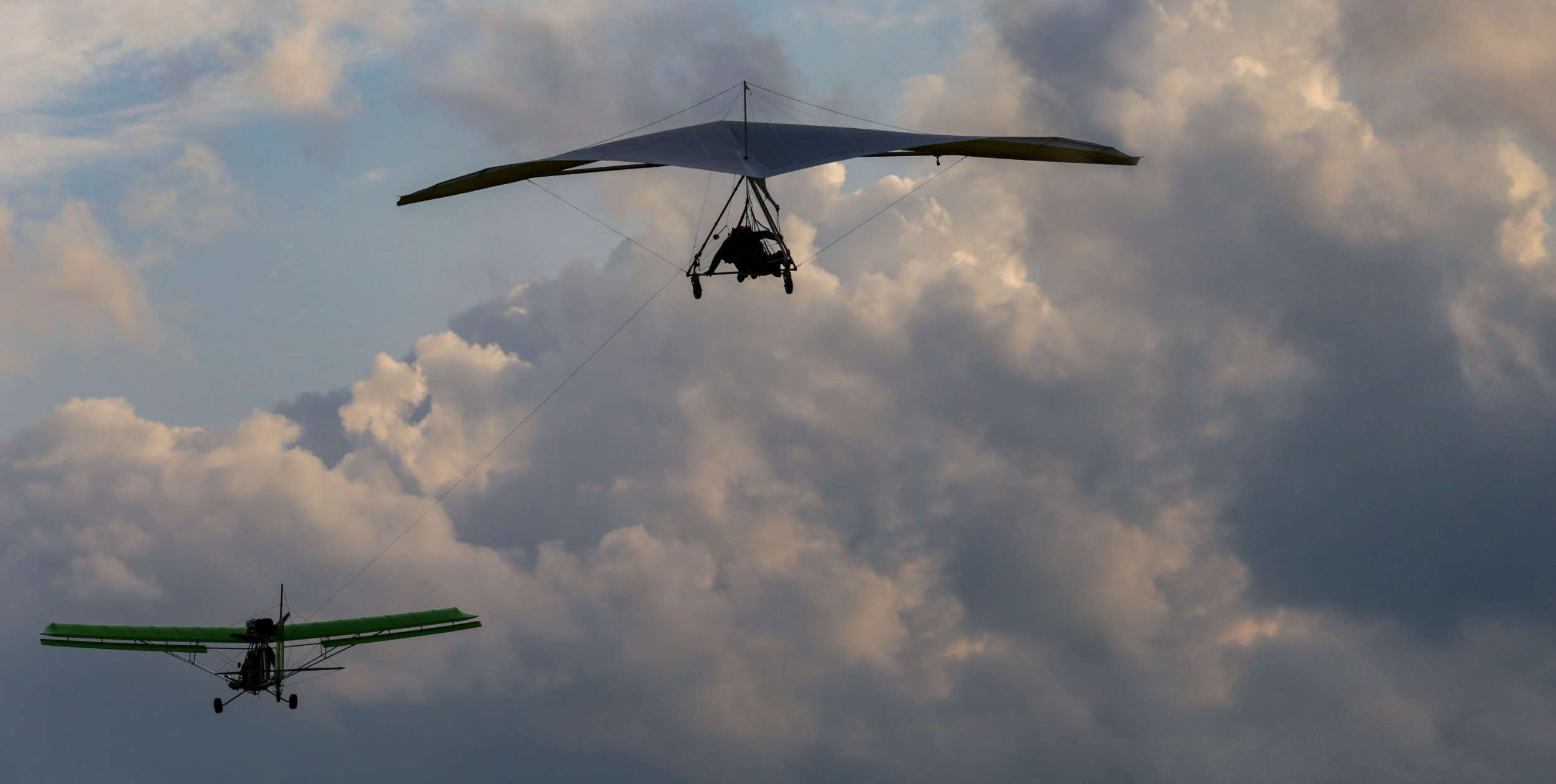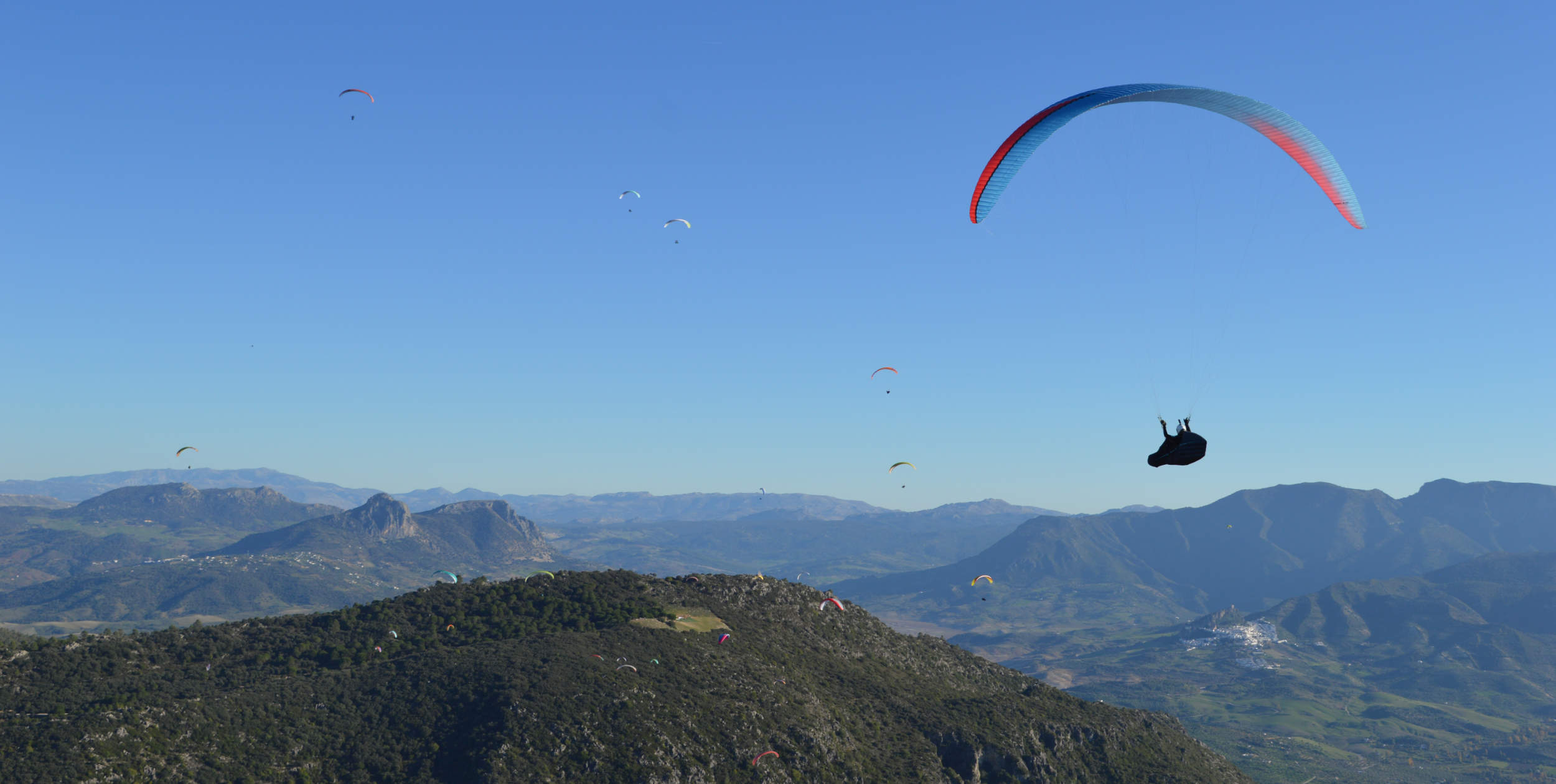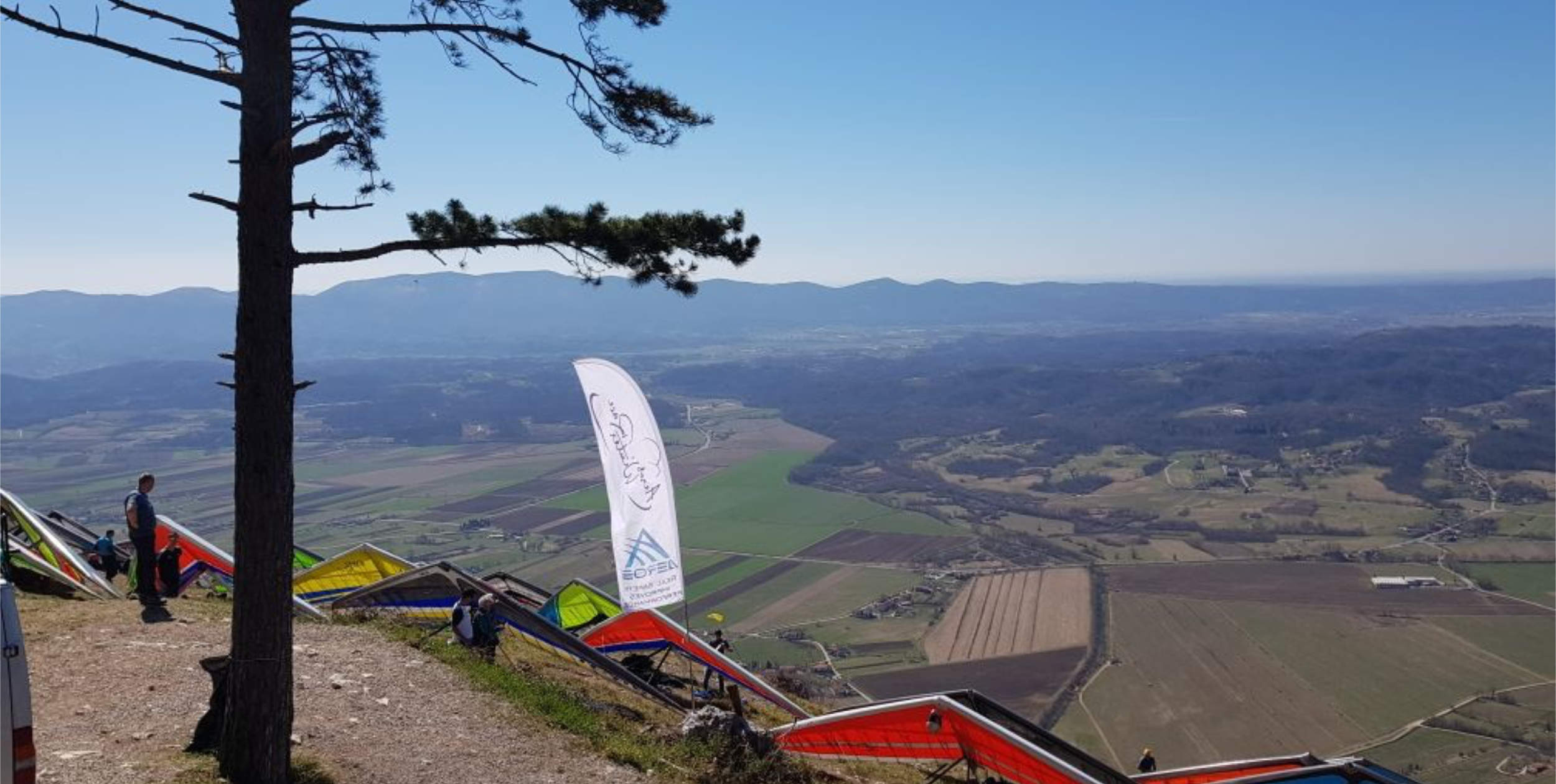Cross Country magazine will be reporting from inside the CIVL Plenary on 20 and 21 February. This page will be updated throughout the day. Refresh your browser to keep up to date.
7.30 pm: Martin Scheel, Swiss delegate and Swiss paragliding team leader talks about how CIVL are going to approach managing competition paragliders in Cat 1 competitions. Martin will chair the working group on all this, and much of what was proposed by the paragliding subcommittee and then adopted by CIVL, stems from his ideas.
2.20pm
The CIVL plenary meeting has closed.
To sum up the big decisions:
The paraglider will NOT be redefined, as requested by the PMA, so carbon technology stays in. (Technically, ‘The definition of paraglider will not be qualified with respect to ‘rigid structures”.)
CIVL will create their own guidelines for Open class paraglider behaviour and manufacturers will have to provide video evidence that their wings conform. How this is policed is undecided.
Prototype hang gliders are banned from FAI cat 1 events from 1 September 2010
Helmets: EN966 helmets, the only ones certified for airsports, will be mandatory in CAT 1 events
Certified harnesses must be used in CAT 1 events from 1 May 2011
2012 PG Europeans awarded to St Andre in France
2012 HG World Championships awarded to Turkey
Tracking devices can be worn by competitors in the next PG Euros [edit 22 Feb: to clarify this point, the rules have been amended so that tracking devices can be used in HG and PG comps – previously there was a chance that if someone made a protest, the rules would deem them as an ‘external aid’ which was not allowed.]
2pm: Final bits of business, ending with closing remarks and a date for the next Plenary – it will be in Lausanne, Switzerland on 26-27 February. Closing remarks: “We have had a very productive four days. Thank you for your cooperation.” And the meeting is closed.
1.50 pm: We interviewed John Aldridge earlier this morning before he became new president of CIVL. He discusses the new rule on excluding prototype hang gliders in Cat 1 competitions, the carbon debate in paragliders, safety and how CIVL works.
1.40 pm: One ripple of excitement in the nominations was when Chris Calvo Burns declined the nomination to be chairman of the paragliding subcommittee – a post he has held for two years – with the words “I am not able to accept the nomination”. That prompted a ‘what do you mean?’ question from the floor. The new president, John Aldridge, explained to the meeting that the UK national association – the BHPA – is unhappy with Calvo being chair of the PG subcommittee while being involved in organising the 2011 PG Worlds in Piedrahita, Spain, and the 2012 Euros in St Andre, France. That conflict of interest means he can’t take the chair, but he can stay involved in the committee.
Robert Aarts from Finland agreed to take on the chair of the paragliding subcommittee.
Here is John Aldridge discussing why Calvo has been asked to step down as chairman of the CIVL paragliding subcommittee.
12.45 pm: The meeting has now moved on to nominating and appointing people to the CIVL Bureau and the chairs of the various subcommittees. Top of the list is CIVL president. The current president, Flip Koetsier, is stepping down after five years in the post.
There are five nominations for president. Four decline the nomination. One, John Aldridge, vice president and UK delegate, accepts the nomination.
He is therefore declared the new president of CIVL.
John Aldridge is a retired army officer and started hang gliding in 1984. He has run hang gliding competitions in the UK since 1995 and serves on the UK’s BHPA executive. He was elected vice president of CIVL in 2002.
The position of president in CIVL is voluntary. We asked the Bureau who was paid and the Secretary, Louise Joselyn (who some will know from competitions held in Laragne, France) said: “The only person in CIVL who is paid is the comps coordinator. Normally the NAC/federation [the national airsports association] picks up the costs of delegates and volunteers, but in some cases delegates end up paying their own costs. CIVL does cover the costs of the president (and in this case, the secretary).”
The Slovenian delegate, the young Igor Erzen, is one who told us he had covered his own costs to be here, and only half-expected to get them back from his national association. Others, like Denmark’s are well funded – national sport associations in Denmark are funded by a tax on gambling, according to Danish attendee Rasmus Rohlff.
12.30 pm: The Pepe Lopes medal next. The Pepe Lopes medal is for ‘outstanding contribution to sportsmanship’:
…was established in February 1993 in memory of Pedro Paulo “Pepe” Lopes of Brazil who was the World Hang Gliding Champion in 1981. His energy and good humour played a big part in developing Brazil as an important centre for international competitions. He died during a hang gliding competition in Japan in 1991. The Medal may be awarded annually, on recommendation by the FAI Hang Gliding Commission, for outstanding contributions to sportsmanship or international understanding in the sport of hang gliding.
There no nominations this year, and thus no one receives the award. Previous awardees are here.
12.30 pm: The discussion has moved on to internal CIVL business and the annual accounts.
The accounts are online here – download ‘agenda pack 4’.
Headlines:
The big picture:
CIVL finished the year with a small excess of income over expenditure, at €4,296, increasing CIVL’s current bank balance to €146,171. However, not all the expenditure for the year has been paid out. Liabilities include late expense claims for CIVL officials. Judging training expenses not yet deducted and Cat 1 championship refund on sanction fee not yet made, amounting to approx €5,500. Note also, that income for the year includes team entry fees and bid fees held as a deposit on future Cat 1 Sanction Fees.
Where’s that from? A large chunk comes from comp fees:
Income from PG events continues to represent approaching 60% of sanction fee income. But growth in sanction fee income is now coming from HG and Accuracy disciplines.
Income from Category 2 events continues to grow year on year, and this year [2009] (Continental championships year), represents 81% of sanction fee income and 60% of CIVL total income.
11.40 am:
The final part of the Dutch proposal – about media – did not get a majority, so failed. Following that, and as expected, the Swiss proposal – the whole carbon debate – was then taken off the table by Swiss delegate Martin Scheel.
11 am:
The Netherlands Proposal is to ban prototype hang gliders in Cat 1 comps. The delegate stands to make his case, which is grounded in safety. He talks about the sprog measurements from last year’s World Championships, where some hang glider pilots turned up with sprog settings way over the top (makes you go faster, decreases stability). The delegate says he is “not worried about the Gerolfs and the Manfreds – they know what they are doing”. He is worried about the ones “who don’t know what they are doing”.
He argues that it will not stop development, because protos will still be able to fly at Cat 2 events – “about 100 events a year”. And development will happen there.
The argument rings bells with what is happening in paragliding just now. The current rule states:
‘Prototype gliders are only allowed with a manufacturer’s statement that the pilot is approved to fly this glider … a statement from the manufacturer must be produced confirming that the glider is airworthy and specifying the sprog settings at which this confirmation is valid.’
The proposal is to change it to:
‘Prototype gliders are not allowed in Cat 1 cross country events.’
A delegate stands to argue that the implication of such a change is that Cat 1 hang gliding will do what paragliding has just rejected ie go Serial class.
A second delegate stands to argue that is not the case. That the proposal says uncertified gliders will be allowed. And that is just what the PG subcommittee has decided to do in PG comps. A third delegate agrees.
The written proposal argues that the number of protos has increased since pilots have had to sign airworthiness waivers. “It became a manner of getting away with any changes made.” The proposal argues that manufacturers are not happy with this development. “It makes them more vulnerable to liability issues.”
If accepted it will be effective from May 1 this year. [11.20 am: This was reviewed and changed to September 1.]
The debate goes back and forwards across the floor, each delegate making their point.
The proposal goes to a vote.
In favour of approving the Dutch proposal: 23
Against: 5
Abstentions: 3
Result: “It passed”
10 am:
Bob Drury writes
Last night we went to the FAI/CIVL dinner and got a chance to talk directly to the delegates, and in particular the PG subcommittee, about the decision they took to turn down the PMA’s request to redefine the paraglider. Martin Scheel, the Swiss delegate, long time Swiss team leader and member of the subcommittee, revealed much more about what went on in the subcommittee meetings that took place on Thursday and Friday.
“We don’t feel there is a need to redefine the paraglider at this moment in time,” Martin told us. “It will need to be redefined at some time, but for the moment we are happy with it. We also do not want to restrict any of the developments that may come from the introduction of these new materials.”
Instead, manufacturers are to be asked to provide evidence that their paragliders are able to safely perform certain ‘basic’ manoeuvres. Those manoeuvres are at present undefined. How that evidence will be judged as to ascertain a wing’s security is also still unclear.
In order for the system to work CIVL will have to write their own set of certification standards, similar to that of EN or LTF, to be carried out on video by the manufactures’ test pilots, in order to judge a paraglider’s eligibility in FAI competitions. Who will judge these gliders’ eligibility is the obvious question and one that hasn’t been answered yet.
Calvo admits that CIVL will have to make these decisions itself, although paying for outside expertise is very much an option.
Martin Scheel however, thinks that the system could be self-regulating with manufactures making the video evidence of their wing’s behaviour freely available to pilots online. “If there are accidents on a certain wing the public will soon know about it and their reputation will be damaged.”
Asking the public to decide what they feel is an unacceptable level of safety for a wing and waiting until accidents prove it to be so could be seen to be putting too much responsibility on the pilot and manufacturer – something that is surely at the very root of the problem CIVL have been asked to address. However, Martin is adamant that this is still a positive step forward and “better than where we were”.
It seems there is little support for Serial Class amongst the subcommittee – they want to keep top-end performance wings alive at the highest level, but implement boundaries to increase safety. They simply think the current definition of Serial Class, EN D and below, is too restrictive. Instead, a new competition class of paraglider is their end goal.
If the proposed system doesn’t create a safer competitive environment though, Martin is clear that the subommittee would not hesitate to look at Serial Class again.
In the meantime Martin, who “worked for Swing as a designer and test pilot for ten years” and the PG subcommittee’s working group will be looking hard at how best to limit design. Restricting aspect ratio or total line length, both aimed at tackling the cravat problem modern two and three line wings suffer from, are being looked at.
Nothing will happen immediately. There will be no changes for the European Championships in Abtenau, Austria at the end of May, but manufacturers will have to provide video evidence that their wings pass the ‘basic’ manoeuvres for events in 2011.
9.55 am: A proposal from Germany to raise the team size of women’s hang gliding comps to six, from four, is discussed. German HG pilot and world champ Corinna Schwiegershausen argued for it previously in an “eloquent” submission at the HG subcommittee. Heather Mull, the Australian meet director, is for it too. Some are against it, arguing it will mean too many medals… The vote goes FOR teams of six.
9.45 am: Looking ahead to the day, what’s coming up? Various different proposals from eight countries are ahead. The country representative – the delegate – makes the proposal, then there is discussion – very calm, hands raised to make their point – and then a decision is made: vote on it, or do something else with it as procedure dictates.
One of the highlights will include whether to exclude prototype hang gliders from Cat 1 comps (Euros, Worlds and Continental championships).
9.15 am: Good morning from the CIVL Plenary. The Plenary has started as it left off, with voting starting almost immediately on the agenda points. All three championship bids proposed at the end of yesterday’s session have been voted through. The HG Euros 2012 will be in Turkey. The PG Euros 2012 will be at St Andre les Alpes, France.
The meeting started with a plea for more involvement with / awareness raising of the new Continental records. Kamira Pereira’s 300km+ PG flight in Quixada at the end of last year has been ratified as a Continental women’s record, but Dustin Martin got a namecheck for not having his recent World Record HG flight submitted for ratification as a Continental record (World Record, yes). Continental records are a newish initiative – the idea being pilots can chase records without having to fly half way round the world to get to a record-breaking spot.
• Got news? Send it to us at news@xccontent.local. Fair use applies to this article: if you reproduce it online, please credit correctly and link to xcmag.com or the original article. No reproduction in print. Copyright remains with Cross Country magazine. Thanks!
Subscribe to the world’s favourite hang gliding and paragliding magazine








